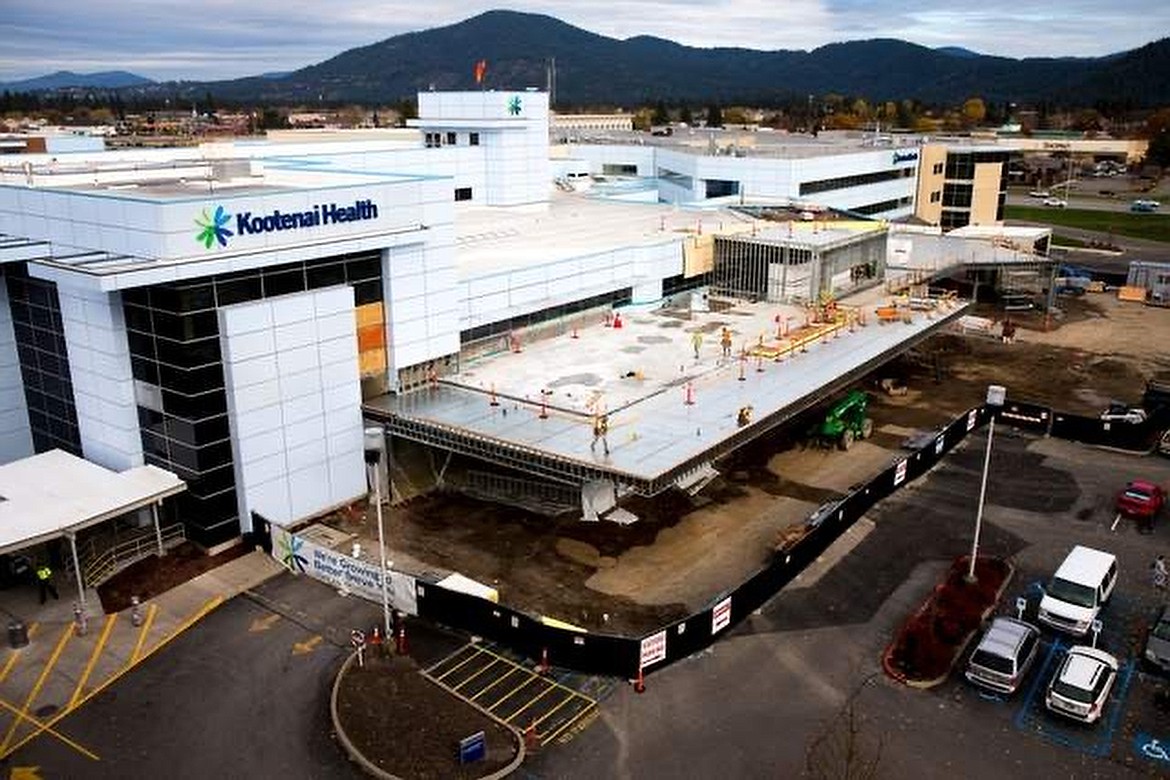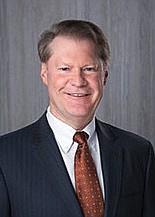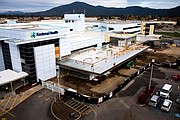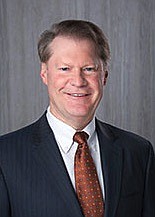Kootenai Health: Embrace the growth
Kootenai County, your hospital feels your growing pains.
It’s growing right along with everything else around here.
But the health care organization’s growth is planned, almost in excruciating detail. Its leaders see the growth and embrace it. For those who think smaller might be better - some believe Kootenai Health should not aspire to be more than a local hospital - consider three things:
- A financial briefing issued Thursday showing the solid fiscal footing of KH during a pandemic that brought many institutions to their knees
- A quick review of Kootenai Health’s just-completed 10-year vision, illustrating how it’s been able to withstand the challenges of both a pandemic and unbridled population growth
- A glimpse at the new 10-year vision and why it projects an even bigger and stronger regional health care system
FINANCIAL STRENGTH
In a meeting last week with Kootenai Health CEO Jon Ness and the organization’s Chief Human Resources Officer, Danny Klocko, rumors that KH is on thin financial ice were addressed.
The rumors may have surfaced, Ness and Klocko said, as a tactic to create doubt about the effectiveness of the Kootenai Hospital District Board of Trustees. On Tuesday, voters will select three trustees. Two incumbents and four others are vying for those three seats.
According to the financial briefing Thursday, the board and hospital administration are doing their jobs well:
*KH finished the fiscal year with a positive operating margin of 3.2 percent despite recording over $23.7 million in lost revenue and additional expenses for COVID-related services that were offset by Provider Relief Funds.
*Standard & Poor’s Global Ratings Services affirmed the hospital district’s “A” long-term rating on outstanding bonds during the pandemic “due to long-term strategy and steady growth, capable and forward-looking leadership, good business position, solid debt coverage ratio, and relatively modest debt load,” the briefing reported.
How did the hospital come through the hellfire of 2020 with little more than sunburn?
The answer to that began a decade earlier.
THE VISION, Part 1
Ness joined Kootenai Health in September 2010 from Billings (Mont.) Clinic, which boasted 3,400 employees at the time, roughly double what he was inheriting in Coeur d’Alene. Ness and his new board immediately went to work, building a long-range plan around this vision statement, adopted by the hospital district board in 2011:
“By 2020, Kootenai Health will be a comprehensive regional medical center delivering superior, patient-focused care and will be recognized among the premier healthcare organizations in the United States.”
Ness remembers it well, growing pains and all.
“We developed this case for change,” he said. “We emphasized, we cannot stand still and remain just a community hospital. We must grow into an outstanding regional medical center.”
He paused for a second, then added: “We had big pushback.”
Any “big idea,” Ness contends, is going to be met with pushback. To illustrate his point, he’ll ask, “What do the following projects all have in common?”
-The Coeur d’Alene Resort
-The Coeur d’Alene Library
-McEuen Park
-Kroc Center
-Riverstone
-Kootenai Health expansion
And he’ll answer, “All faced opposition.”
“We had several longtime leaders who, this was just too big of a concept for them,” Klocko said of the hospital district vision unveiled in 2011. “They liked things the way they were.”
Ness and Klocko said it took three or four years to overcome opposition to the big idea. “Rather than fight it or resist it,” Ness said, “just understand it.”
“We just frankly rolled up our sleeves and got to work,” he added. “We took the feedback. We tried to understand it and we proceeded to do the work that we had committed to.”
That work focused on new programs, new services and new facilities.
On the facilities front alone, Kootenai Health invested $137 million in a handful of major projects, headlined by $57 million expanding the eastern side of the hospital (2016), $45.2 million on operating room and emergency department expansion (2018), $12 million on both the Post Falls (2017) and Third Floor East (2019) expansions, and $4.5 million on the new hospitality center (2018).
THE VISION, Part 2
This spring, the hospital district board of trustees and leadership team unveiled the vision for the next decade.
Like its predecessor, it’s a big idea - and yes, it’s facing some opposition, as the local election is demonstrating today. The 2030 Vision: “One connected team, boldly transforming the health care experience, to become a premier medical destination.”
“Premier” is more than a feel-good adjective to Ness. It’s quantifiable by category, and will in fact be measured by a third party in these areas:
*Top 10th percentile for quality and safety
*Top 10th percentile for patient experience
*Top 10th percentile in value
*Top 10th percentile in employee engagement
*Zero preventable harm
Ness and Klocko believe every one of these goals for Kootenai Health can - and will - be achieved.
“This is the second time we’ve done this,” Ness said. “We made some mistakes in that first planning process. We learned a lot about humans and their openness or resistance to change, and we’re going to use that to our advantage.”
Ness is proud of what Kootenai Health has become for the community it serves, growing from 1,800 employees to 4,200 in the past decade.
“The average age of our employees is 42, 43, and 75 percent are women,” he said. “The average salary at Kootenai Health is about $50,000…
“When this started in 2011, the unemployment rate in Kootenai County was 12 1/2 percent. So when Kootenai Health decided to make the commitment to grow and to invest, it created jobs for younger people. They buy houses, they buy cars, they buy groceries, and by far the largest industry in Kootenai County is health care. Twenty percent of the economy in this area is health care.”
Ness and Klocko say growth is unavoidable, and not just because senior citizens go where there’s good medical care.
“I think our community has so many positive attributes, there is no stopping the growth that’s going to occur,” Ness said. “Rather than focus on trying to stop the growth, we should embrace it and figure out as a community how we can all thrive together. People are going to come here. It has too many attributes - high quality of living, fantastic recreational amenities, a hospitable community, for many a very good political environment.”
Ness also notes that it’s not just seniors who are flocking to North Idaho. Pointing to Motor Vehicle Department statistics based on license plates turned in by newcomers to Kootenai County, the largest demographic of people moving here is the 30-39 age group.
“Guess what? They’re working from home,” Ness said. “Why did they move here? Because they can live anywhere.”
And they can receive world-class medical care without leaving the county, he said, noting that clinical studies have shown patients and their families do better when they can stay close to home. All of which adds up to a very positive approach as the hospital district dives into its new 10-year plan.
“We go into this process and this commitment with high confidence because the very people that were elected to serve on our board support it,” Ness said. “It really builds the confidence of our administrative team to be able to implement the strategy. They know it’s hard. They know there will be resistance, but there’s no disagreement whatsoever between the Kootenai Health board and administration about who we are and where we’re going.”







